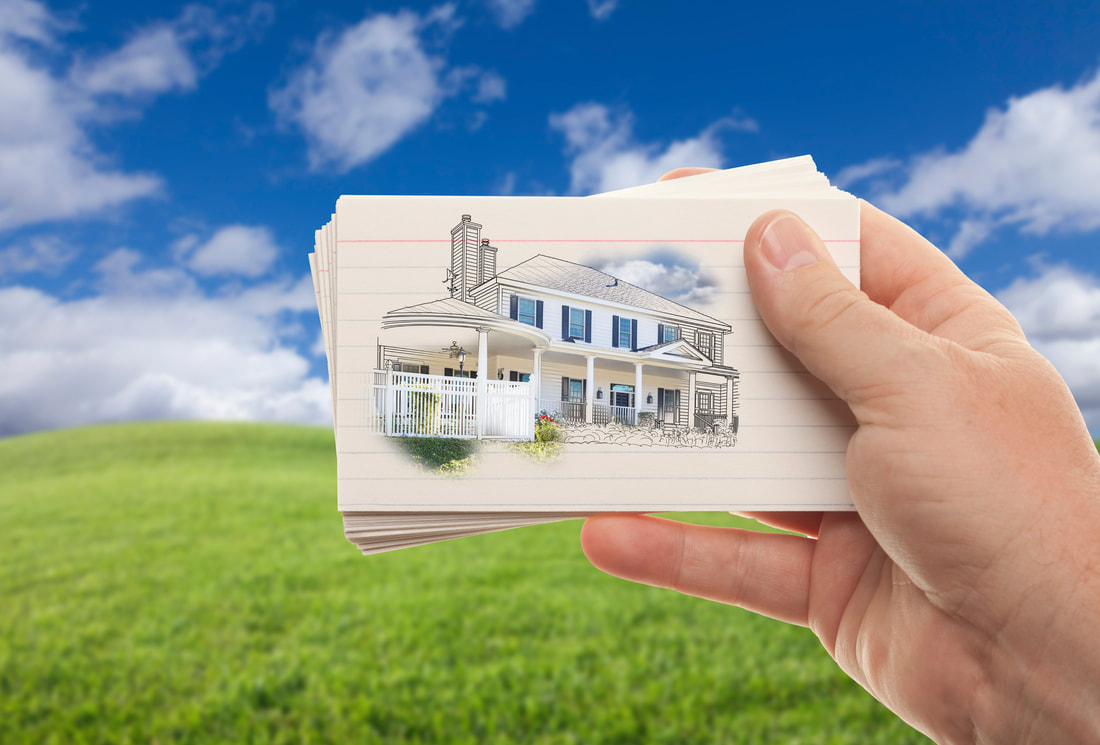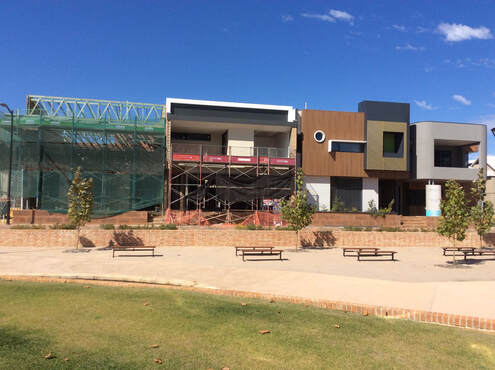 Before leaping into your new project carefully consider what needs to be done. Careful planning and preparation and monitoring all stages of the process will ensure a successful project. Steps to planning, designing, constructing and finishing your new house include:
To be continued in Part 2.  For more valuable tips and advice read: 'An Introduction to Building and Renovating Houses - Volume 1 Hiring Contractors, Managing Construction and Finishing Your Home' and 'Volume 2 Finding Your Ideal Property and Designing Your Dream Home' This is an extract from: 'An Introduction to Building and Renovating Houses Volume 2' by Paul Netscher. Available in paper or eBook from Amazon.com, Amazon UK, Amazon CA, Amazon AU and all online bookstores. To read more © 2018 This article is not to be reproduced for commercial purposes without written permission from the author.
2 Comments
 In a previous article we discussed some items which influence the cost of constructing a new house. Understanding what can increase or decrease the cost of building will allow you to make considered decisions when deciding where you are going to build the house and when you will start as well as influencing your design choices. In this article I continue with points that impact house construction costs. What influences house building costs? Continued from part 1.
You should take into consideration some of the above when formulating your construction budgets and when designing your house. I’m not suggesting that your house should be a box with the cheapest fixtures and fittings, but it’s important to understand that house prices can vary hugely from one area to another, and from one plan to another. The price will change depending on your choice of finishes, cupboards, light fittings, taps, tiles, counter tops, etc. When receiving quotations it’s vital to understand what you’ll be getting for your money. Contractors should also familiarise themselves with the construction conditions on your property.  For more valuable tips and advice read: 'An Introduction to Building and Renovating Houses - Volume 1 Hiring Contractors, Managing Construction and Finishing Your Home' and 'Volume 2 Finding Your Ideal Property and Designing Your Dream Home' This is an extract from: 'An Introduction to Building and Renovating Houses Volume 2' by Paul Netscher. Available in paper or eBook from Amazon.com, Amazon UK, Amazon CA, Amazon AU and all online bookstores. To read more © 2018 This article is not to be reproduced for commercial purposes without written permission from the author.  Construction costs vary hugely between different houses, neighbourhoods and cities. What influences these costs and how can you ensure that the construction costs you allow in your budget to build your new house, or renovate an existing home, are reasonable? Why will the cost of building a house in your neighbourhood be different to building elsewhere? Indeed, why can the cost of one house be different to the cost of a similar size house in the same area? Why does the price quoted by your builder increase as construction proceeds? How can you ensure that you stay within your budget? How can you reduce costs without ending up with a house of poor quality, or one that isn't functional, or that doesn't meet all your expectations? What influences house building costs? The major construction cost drivers include:
When selecting a property you should consider some of the above items. Some properties will be more expensive to build on that a similar sized property down the road. Even deciding on the position of the house on the property will influence construction costs. In part 2 we will look at more items that could influence house construction costs. Make sure that your budget is correct and that you can build the house you want.  For more valuable tips and advice read: 'An Introduction to Building and Renovating Houses - Volume 1 Hiring Contractors, Managing Construction and Finishing Your Home' and 'Volume 2 Finding Your Ideal Property and Designing Your Dream Home' This is an extract from: 'An Introduction to Building and Renovating Houses Volume 2' by Paul Netscher. Available in paper or eBook from Amazon.com, Amazon UK, Amazon CA, Amazon AU and all online bookstores. To read more © 2018 This article is not to be reproduced for commercial purposes without written permission from the author.  In the last post: Have you allowed for all the costs of your new home build? Part 1 we considered some costs to consider when planning and budgeting you home renovation or new house. In this post we continue with more costs to consider. Costs for your construction project could include some or all of the following:
Forgetting or overlooking costs may result in your project going over budget, which could mean you can't complete the project, or you have to compromise on the project, perhaps reducing the quality of finishes, so that you can save money to bring the project within budget. Regrettably sometimes owners end in financial difficulties because of incomplete or insufficient budgets causing severe financial stress for many years, in the worst case even losing their new home. Always make sure you have allowed for all of your estimated costs. Then allow a contingency.  For more valuable tips and advice read: 'An Introduction to Building and Renovating Houses - Volume 1 Hiring Contractors, Managing Construction and Finishing Your Home' and 'Volume 2 Finding Your Ideal Property and Designing Your Dream Home' This is an extract from: 'An Introduction to Building and Renovating Houses Volume 2' by Paul Netscher. Available in paper or eBook from Amazon.com, Amazon UK, Amazon CA, Amazon AU and all online bookstores. To read more © 2018 This article is not to be reproduced for commercial purposes without written permission from the author.  Image courtesy of fantasista at FreeDigitalPhotos.net Image courtesy of fantasista at FreeDigitalPhotos.net Frequently costs of building a new house or renovating your home aren’t considered, or are overlooked, which could result in your budget for your home project being too low. Costs for your construction project could include:
Conclusion Not allowing for some costs in your budget will inevitably mean that your home building project goes over budget, which could lead to financial stress and even there not being enough money to complete your project. It's vital to ensure you've allowed for all costs.  For more valuable home building and renovation tips and advice read: 'An Introduction to Building and Renovating Houses - Volume 1 Hiring Contractors, Managing Construction and Finishing Your Home' and 'Volume 2 Finding Your Ideal Property and Designing Your Dream Home' This is an extract from: 'An Introduction to Building and Renovating Houses Volume 1 and 2' by Paul Netscher. Available in paper or eBook from Amazon.com, Amazon UK, Amazon CA, Amazon AU and all online bookstores. To read more © 2018 This article is not to be reproduced for commercial purposes without written permission from the author.  Want to build a new house, or renovate and improve your current home, but don’t know where to start? I have the answers. Read: Build and Renovate Your Home With Your Eyes Wide Open Whether using a professional contractor or doing all the work yourself, I will help you achieve your dream house avoiding the slip-ups, pitfalls and dramas that afflict many house construction projects. Learning what to lookout for will save you thousands and avoid problems which could spoil your project’s success. I’m a construction professional, author of several successful construction management books, and a home owner. I’ve made mistakes in construction management, I’ve seen others make mistakes, but importantly I’ve had multiple successful construction projects and I’ve learned from the mistakes. I want to share these lessons and my knowledge with you. This easy to read book is packed with tips and information to ensure your house improvement project is a success. It answers the what, where, when, how, why and who questions. It will open your eyes to possibilities for your new house, the traps and dangers you must avoid, and what you need to consider. All the stages of your home building project are discussed, from deciding what you want, where you’re going to build it, what help you need, designing your home, selecting and appointing contractors, what you need to know to do everything yourself, building processes, managing construction, and finally, completing the project. In addition, there are chapters on contractual and financial matters, as well as how to avoid common construction mistakes. To conclude, there are suggestions for simple changes you can make to improve your home. Building your home, or undertaking a major renovation can be a daunting undertaking. There are literally hundreds, even thousands of decisions to be made, what to build, where to build, when to start, what help you need, what you will do yourself, down to the everyday decisions such as paint colours, types of taps and even door handles. Your home is one of the biggest financial investments you make and you will have to live with most decisions for many years. So it’s important to make the right decisions – decisions which are right for YOU and YOUR family. Some books advise you to do everything yourself, another book tells you not to trust contractors, while another says you should engage an architect and a contractor. But, we are all different, we have different abilities, financial means, time constraints and even varying physical capabilities. So, what’s right for one person may not be right for another. But, even projects vary, some are relatively simple, while others are complex, depending on the house design, the location, the property’s physical constraints, and even the local laws. Therefore I don’t tell you what you must do, rather I take you through the construction processes, providing you with options and their pros and cons, giving you sufficient information so you can make the best decisions for you. Armed with this knowledge your home construction project will be a success. Good luck. Get your paper book or ebook from Amazon and other online stores. Amazon.com, Amazon UK, Amazon Au, Amazon DE, Amazon ES, Amazon CA, Amazon IT, Amazon FR, Amazon NL |
AuthorI’m a construction professional, author of several successful construction management books, and a home owner. I’ve made mistakes in construction management, I’ve seen others make mistakes, but importantly I’ve had multiple successful construction projects and I’ve learned from the mistakes. I want to share these lessons and my knowledge with you. Also available from:
Amazon Au, Amazon DE, Amazon ES, Amazon CA, Amazon IT, Amazon FR, Amazon NL, Amazon India and 'An Introduction to Building Houses - Volume 2 Finding Your Ideal Property and Designing Your Dream Home'
Archives
July 2024
CategoriesWe welcome genuine comments, especially comments that add additional information to the subject matter in the article. We however reserve the right to remove inappropriate comments, which includes comments that have nothing to do with the subject, comments that include inappropriate language, and comments that are an advertisement for a product or company, or which include an advertising link. Comments must be in English. We will not enter into discussion on why a particular comment was removed.
|


 RSS Feed
RSS Feed


